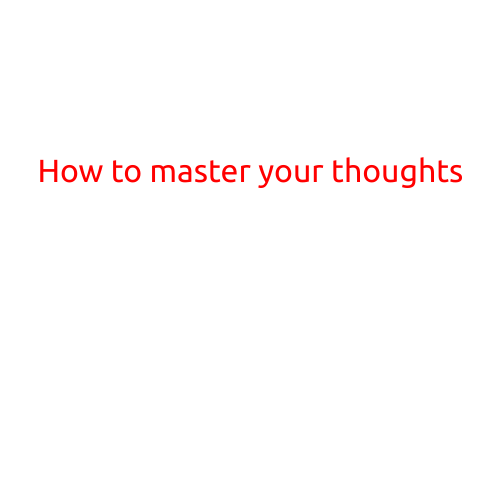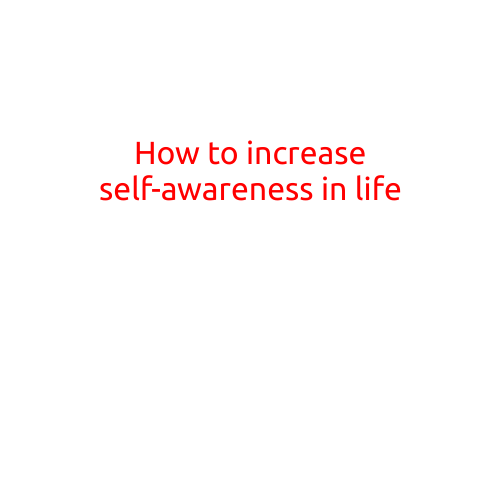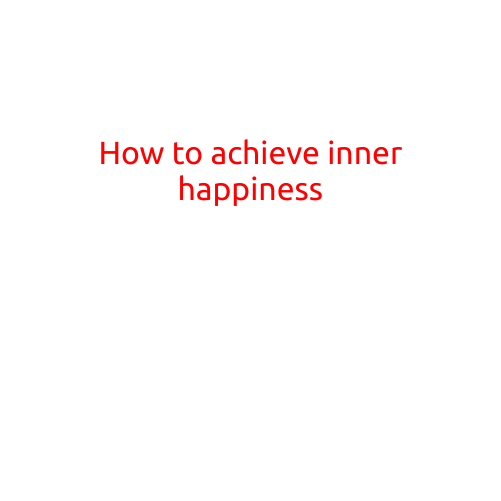
How to Master Your Thoughts: A Guide to Mindfulness and Inner Peace
Are you tired of feeling overwhelmed and controlled by your thoughts? Do you struggle to quiet your mind and find peace amidst the chaos of daily life? Mastering your thoughts is a journey that requires discipline, patience, and practice, but the rewards are well worth the effort. In this article, we’ll explore the power of mindfulness and provide you with practical tips and techniques to help you take control of your thoughts.
Understanding the Nature of Thought
To master your thoughts, you must first understand their nature. Thoughts are like clouds passing across the sky – they come and go, often without warning. Some are gentle and soothing, while others are turbulent and turbulent. They can be triggered by our emotions, memories, or even external stimuli. The key is to recognize that thoughts are not facts, but rather a reflection of our own minds.
The Power of Mindfulness
Mindfulness is the practice of being present in the moment, without judgment or distraction. When practiced regularly, mindfulness can help you cultivate a greater awareness of your thoughts, emotions, and physical sensations. This increased awareness allows you to observe your thoughts without getting caught up in them, effectively granting you the power to master them.
5 Practical Tips to Master Your Thoughts
- Start a Mindfulness Practice
Begin by setting aside a few minutes each day to practice mindfulness meditation. You can sit comfortably with your eyes closed, focusing on your breath, a mantra, or a physical sensation in your body. When your mind wanders, gently bring it back to the present moment. As you practice, you’ll develop greater awareness of your thoughts and emotions.
- Label Your Thoughts
As you become more mindful, start labeling your thoughts by categorizing them as “thoughts,” “emotions,” or “physical sensations.” This simple act helps you detach from your thoughts, recognizing that they are not a reflection of reality.
- Use the “3-Second Rule”
Whenever a negative thought arises, take a deep breath and pause for three seconds before reacting or engaging with it. This brief pause allows you to assess the thought more objectively, rather than simply acting on instinct.
- Practice Gratitude
Make a conscious effort to focus on the things you’re grateful for each day. This simple practice shifts your attention away from negative thoughts and cultivates a sense of joy and contentment.
- Limit Technology Use
The constant stream of information from social media, email, and other digital sources can be overwhelming and distracting. Establish boundaries around your technology use to reduce the noise and allow yourself time to think more clearly.
Conclusion
Mastering your thoughts is a journey that requires patience, practice, and self-awareness. By embracing mindfulness and implementing these simple techniques, you’ll be better equipped to manage your thoughts, reduce stress, and cultivate inner peace. Remember, your thoughts are not you – they are mere reflections of your mind. Take control of your thoughts, and you’ll find greater freedom and clarity in your daily life.
Recommended Reading:
- The Power of Now by Eckhart Tolle
- Mindfulness by Mark Williams and Dannypenman
- Wherever You Go, There You Are by Jon Kabat-Zinn
Additional Resources:
- Mindfulness apps such as Headspace and Calm
- Online courses and guided meditations on platforms like Coursera and Udemy
- Local mindfulness groups and meetups in your community





